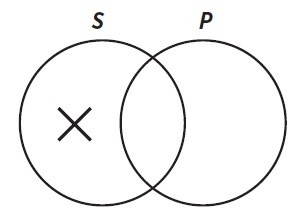For each of the following correlations, use your background knowledge to determine whether A causes B, B causes A, a common cause C is the cause of both A and B, or the correlations is accidental.
1. There is a positive correlation between U.S. spending on science, space, and technology (A) and suicides by hanging, strangulation, and suffocation (B).
2. There is a positive correlation between our dog Charlie’s weight (A) and the amount of time we spend away from home (B). That is, the more time we spend away from home, the heavier Charlie gets (and the more we are at home, the lighter Charlie is.
3. The height of the tree in our front yard (A) positively correlates with the height of the shrub in our backyard (B).
4. There is a negative correlation between the number of suicide bombings in the U.S. (A) and the number of hairs on a particular U.S President’s head (B).
5. There is a high positive correlation between the number of fire engines in a particular borough of New York Cite (A) and the number of fires that occur there (B).
6. At one point in history, there was a negative correlation between the number of mules in the state (A) and the salaries paid to professors at the state university (B). That is, the more mules, the lower the professors’ salaries.
7. There is a strong positive correlation between the number of traffic accidents on a particular highway (A) and the number of billboards featuring scantily-clad models (B).
8. The girth of an adult’s waist (A) is negatively correlated with the height of their vertical leap (B).
9. Olympic marathon times (A) are positively correlated with the temperature during the marathon (B). That is, the more time it takes an Olympic marathoner to complete the race, the higher the temperature.
10.The number gray hairs on an individual’s head (A) is positively correlated with the number of children or grandchildren they have (B).
1. Accidental
2. B causes A. Perhaps when we are away from home, Charlie gets less
exercise, hence putting on more weight. In that case B is (indirectly)
causing A, since our being away from home results in Charlie getting less
exercise, which results in him gaining more weight.
3. Common cause. The common cause is simply the factors that make
plants grow, such a sunlight, water, and good soil. In this case, A and B
are not causing each other, but there is something else (i.e., growth
factors of plants) that is causing each one, independently to grow.
4. A causes B. The more bombing, the more stress for the president. And
the more stress for the president, the more of his hairs fall out.
5. B causes A. Arguably, the average number of fires per year will influence
the number of fire engines needed. Fewer fires would require fewer
engines (in which case they’d likely retire some); more fires would require
more engines (in which case they’d likely acquire some).
6. Common cause: agrarian societies will have more mules and will also
probably pay professors less, since higher education is not as important in
an agrarian society. So the common cause is being a (more or less)
agrarian society.
7. B causes A. Drivers are distracted by the scantily-clad models on the
billboards and more distracted drivers causes more accidents.
8. A causes B. The wider one’s waist, the higher the weight due to fat. The
higher the weight due to fat, the lower one’s vertical leap.
9. B causes A. The heat causes slower marathon times.
10. Common cause: Ageing. The older one is, the more likely one will have
gray hair and the more likely one will have more children or grandchildren.
However, neither of these factors are causing the other. Rather, both are
being caused independently by a common factor: age.
You might also like to view...
On Darwin’s view, morality arises from __________
a. the natural moral law b. social instincts c. the desire for pleasure d. divine commands
INSTRUCTIONS: Select the answer that best characterizes each argument. Radio host Rush Limbaugh argues that America's foreign policy is a great success. But who is this screwball Limbaugh? He's nothing but a fascist, sexist, homophobic, drug-addicted moron, who will say anything to stir up the ultra right. Every sane person should shut him off
A) Begging the question. B) Argument against the person, abusive. C) False cause D) Hasty generalization. E) No fallacy.
According to Charles Mills, the problem with the social contract is it:
A. was formed before the births of anyone now living. B. is neither formally nor actually extended to non-whites. C. it is formally, but not actually, extended to non-whites. D. Both A and C E. None of the above
Identify the proposition in a categorical syllogism that is represented by the Venn diagram.
A. "Some S are not P." B. "Some S are P." C. "No S are P." D. "All S are P."